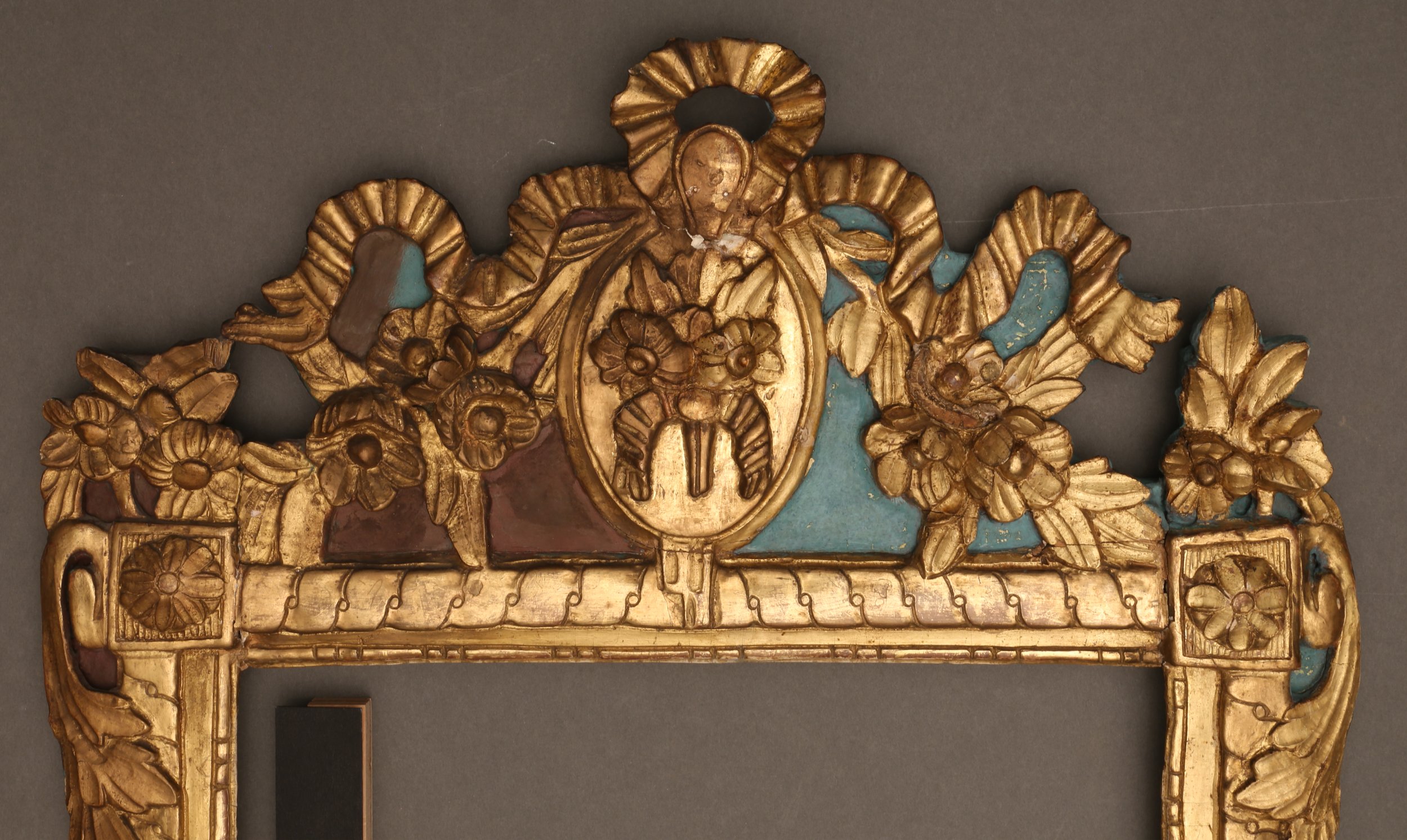18th c. Louis XVI Frame
Before Treatment
This privately owned 18th c. Louis XVI mirror came to us for cleaning, consolidation and repair of ornamentation, structural strengthening, and overpaint removal. The heavy beveled mirror, although not original, was functional and good enough for the owner. This meant that the fragile and structurally compromised historic frame needed to be strengthened in order to support the weight of the old, although historically inappropriate, existing mirror. This frame, like most from the period, was built on a wooden framework that was then coated with gesso, cast ornamentation, paint, and gilding (both water and oil gilding were present).
(continued)
The wood was unfortunately compromised by past insect infestations that reduced the amount of wood in the structure, leaving it riddled with empty tunnels, resulting in the frame being structurally weak and subject to cracking and splits in the wood.
The frame had been previously restored with several glue repairs of damaged gesso or missing ornamentation. Damaged or missing areas had been overpainted with metallic brass paint and the color of the top background recesses had been changed. The painted recessed areas in the upper comb were originally light sky-blue in color, but were currently overpainted a red/brown color. The top central circular ribbon ornament was barely attached, and was loose with cracked and missing gesso around its base and place of attachment.
Surface Cleaning
After thorough examination and photographic documentation, we removed the mirror and wood backing panels from the frame. An appropriate cleaning solution was applied with a generous coating to the back of the insect tunneled frame to kill all potential insects and larvae. We then removed the overpaint on the gilding and in the comb recesses with both organic solvents and aqueous detergents. As noted above, once the red/brown overpaint was removed from the comb recesses, a beautiful period appropriate light sky-blue color was revealed. This color made the surrounding burnished gold of the frame visually pop.
Fills & Inpainting
All old inappropriate fills were removed and missing frame ornamentation was replaced by either carving it from wood, casting it in a carve-able two-part conservation grade epoxy, or filling and shaping missing pieces or areas using gesso. New fills, castings or carvings were sealed with a synthetic varnish prior to inpainting along with nicks, scratches, and some abrasions using both Mica powders and conservation grade paints.
Stabilizing the Frame
To help consolidate the insect tunneled wood, we flowed-in/injected adhesive into all of the passageways and openings. On top of this, we drilled a four-inch long 3/8” diameter hole through the blue paint on the left and right edges of the frame through the existing historic mortise and tenon joints holding the corners of the frame together. After drilling, a 3/8” dowel was inserted into the holes and secure with a conservation grade adhesive. These dowels were added to ensure that the corner joinery with heavy insect tunneled (although now strengthened and consolidated) wood would be secure enough to support the weight of the existing thick beveled glass mirror. We then placed the mirror into the conserved frame using modern aluminum mending plates, and then placed the historic wooden backing boards back in place. We installed modern 3 holed heavy weight “D” ring hangers with heavy braided picture wire on the back to enable the client to safely rehang the mirror.

















